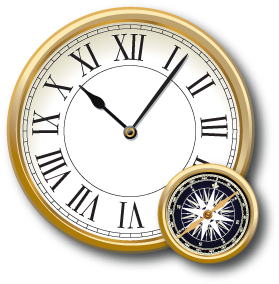Primitive Does Not Mean "Stupid"
We were recently guest lecturers at a school coop, where we talked about real pirates in history, and the navigation techniques they would have used in the 16th century. We explained that they estimated their ship's speed in those days by dropping a chip of wood (or whatever) into the water at the bow, and counted how long it took to get to the stern. We had them build simple astrolabes out of cardboard and measure the angle to the noon sun to calculate their latitude. Use of these simple, low-tech tools gave the kids the opportunity to explore the basic principles involved, and appreciate the creativity that the old seafarers had to use to build the tools that would let them learn where they were when out of sight of land. The students estimated their latitude as somewhere between 30 and 45 degrees north (yikes! much too big a range to be useful!) and that was on solid ground, not even having to deal with the motion of the ship which would make it even more challenging to get accurate measurements. They ended up understanding how difficult it was for the old sailors, and learning that their simple tools were in reality elegant solutions to the basic problems of navigation.





Post new comment
0 Comments